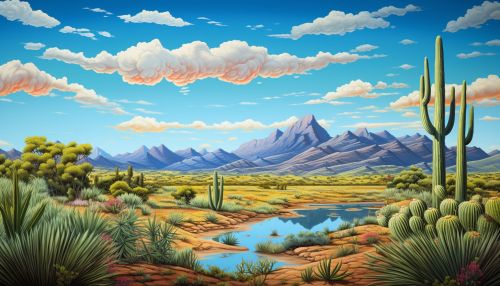Sonoran Desert
Introduction
The Sonoran Desert is a North American desert which covers large parts of the Southwestern United States in Arizona and California, and of Northwestern Mexico in Sonora, Baja California, and Baja California Sur. It is the hottest desert in Mexico. It has an area of 260,000 square kilometers (100,000 sq mi).
Geography
The desert contains a variety of unique and endemic plants and animals, such as the Saguaro (Carnegiea gigantea) and Organ Pipe Cactus (Stenocereus thurberi).


The Sonoran Desert includes 60 mammal species, 350 bird species, 20 amphibian species, over 100 reptile species, 30 native fish species, over 1000 native bee species, and more than 2,000 native plant species. The desert is also home to the only jaguar population in the U.S.
Climate
The Sonoran desert has a subtropical desert climate, with high temperatures especially in the summer. The desert experiences bi-seasonal rainfall, a rarity for deserts, with the majority of the rain falling in the winter.
Flora and Fauna
The Sonoran Desert is known for its diverse and abundant flora and fauna. The most famous plant here is the Saguaro cactus, which is not found in any other desert. The desert is also home to the endangered Jaguar.
Human Interaction
The desert has been inhabited by the Tohono O'odham and the Yaqui people for thousands of years. The desert is also home to several large cities, including Phoenix and Tucson in the United States and Hermosillo in Mexico.
Conservation
Several national parks and monuments in the United States and Mexico preserve portions of the Sonoran desert, including Saguaro National Park and Organ Pipe Cactus National Monument.
